MAP Website en Español haga clic aqui Priority questions for mangrove science and management
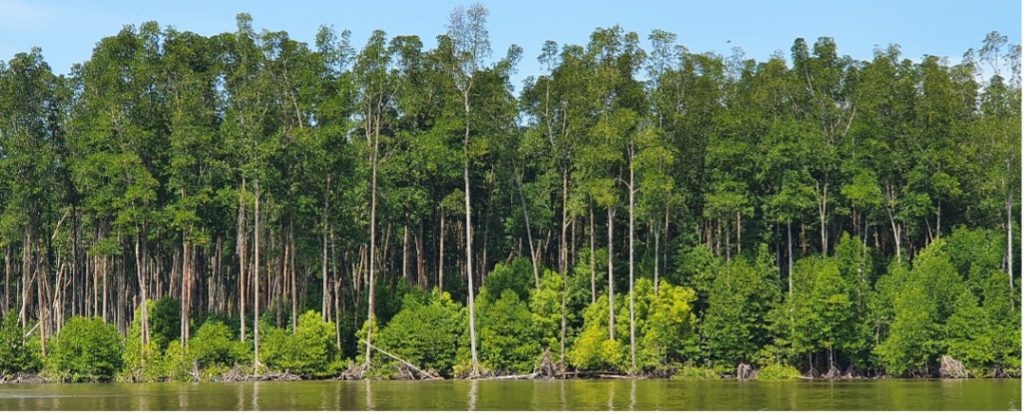
GLOBAL – You are being asked to take part in a study laying the basis of the future science and management of mangrove forests. Systems Ecology and Resource Management (SERM) in Brussels, Belgium is keen to identify with your help the future scientific curiosity-driven and managerial need-driven questions to which science, management and/or governance needs an answer. We are targeting stakeholders from as many countries (and sites) as possible. This invitation has been launched by Farid Dahdouh-Guebas (Université libre de Bruxelles – ULB, Brussels, Belgium) and collaborators on the 2019 Mangrove, Macrobenthos and Management MMM5 Workshop in Singapore. More information about the background, benefits, anonymity, etc. in terms of participation can be found in the link below. The study prompts to identify the future scientific curiosity-driven and managerial need-driven questions to which science, management, and/or governance needs an answer from as many countries (and sites) as possible. You (the participant) can take part in this research by answering the questions presented to you in this survey. We expect you to have experience in science, management or policy-making related to mangrove ecosystems or coastal zones including mangroves. After collecting results, individual records will be numerated and privately kept for research purposes only. Our survey on has only 2 main questions plus some background information about yourself and should not take more than 10 to 20 minutes of your time. This survey has been translated in nearly 20 languages. We appreciate sharing the URL widely: CLICK HERE GLOBAL World Health Day – April 7, 2022 “Our planet, our health”

GLOBAL – Through the Our planet, our health campaign, World Health Organization (WHO) is urging governments and the public to share stories of steps they are taking to protect the planet and their health and prioritize well-being societies. In the midst of a pandemic, a polluted planet, increasing diseases like cancer, asthma, heart disease, on World Health Day 2022, WHO will focus global attention on urgent actions needed to keep humans and the planet healthy and foster a movement to create societies focused on well-being. WHO estimates that more than 13 million deaths around the world each year are due to avoidable environmental causes. This includes the climate crisis which is the single biggest health threat facing humanity. The climate crisis is also a health crisis. Submit your short film for the “Our planet, our health” award! Submissions will be open from 30 October 2022 to 30 January 2023. READ MORE AFRICA Massive Dam to be Built in Africa Threatens to Wipe Out Mangrove Forests
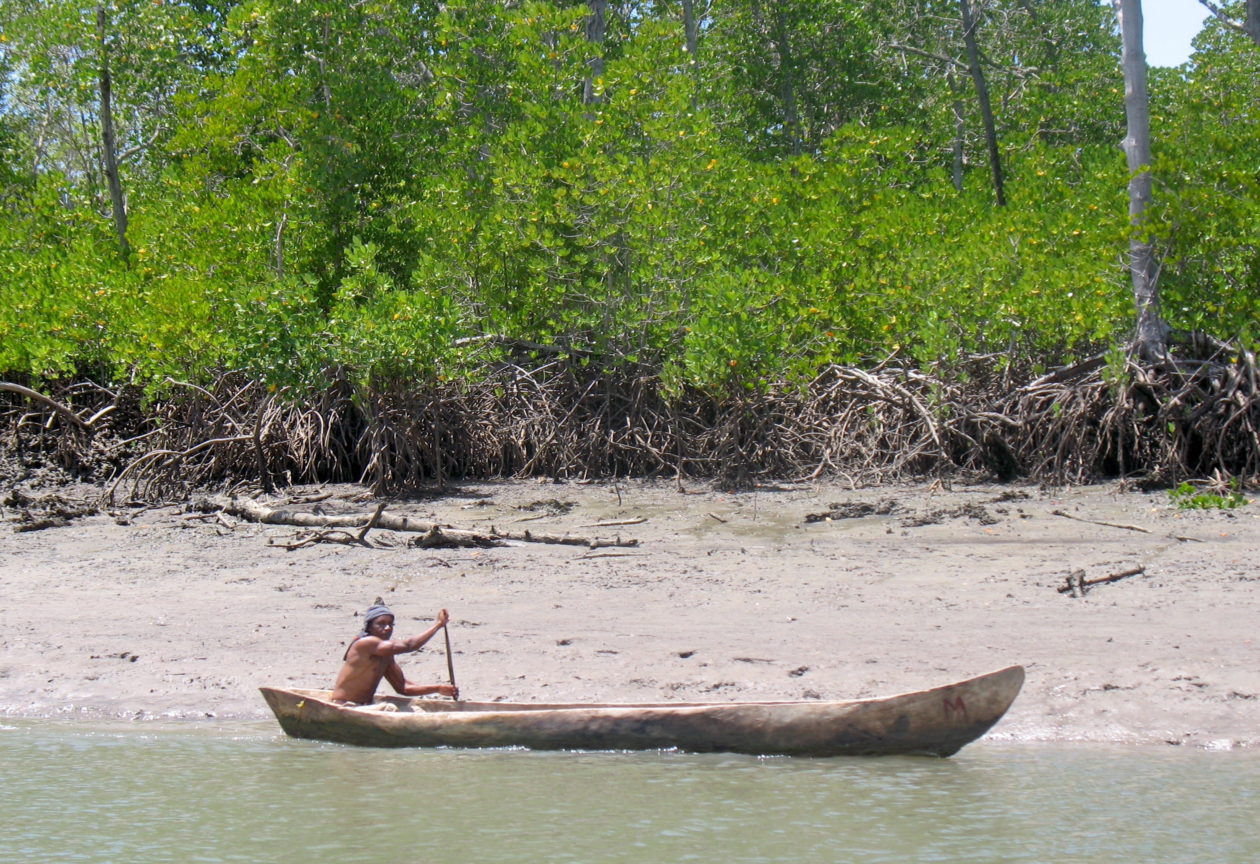
TANZANIA – A massive hydroelectric dam under construction in Tanzania threatens to flood part of a famed game reserve and deprive villages and mangrove forests of the water they depend on, experts warn. But fear of the country’s authoritarian government has silenced the project’s critics. Environmental scientists warn that the $3.6 billion dam will have a devastating impact on the delta — all but ending the river’s wet-season floods, which bring in freshwater and silt. The mangroves will die; the fish will disappear; and the delta itself will start to be eroded by the ocean. Coastal villages such as Jaja will be the first to go. But the people of Jaja and others across the delta that I visited had never heard of the dam plan, much less been consulted. The Stiegler’s Gorge dam may become one of the most environmentally damaging hydroelectric projects ever constructed in Africa. READ MORE How Mombasa’s beach yoghurts powered a Kenyan reforestation drive
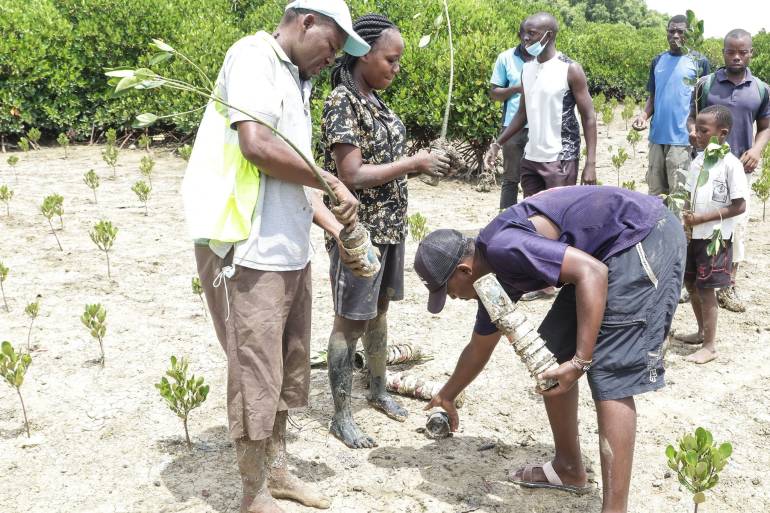
KENYA – As the world’s mangrove swamps keep disappearing and beaches face mounting waste, a Kenyan environmental group is rising to the challenge. Hesbon Mwarabu has worked as a beach guide and fisherman in the coastal city of Mombasa for so long that the 54-year-old feels wedded to the ocean. He was only 20 when his father, also a fisherman, introduced him to the trade that has helped Mwarabu build a house for his family and educate his four children. A decade ago, the beaches and ocean were regularly full of all types of waste, especially plastics. So he and other fishermen were forced to pick waste, even from the ocean. Twelve years ago, the community-based group was founded in Mikindani, a low-income neighbourhood in Mombasa by six environment conservation activists. When they began, they had no physical office, no funding, no staff and only one computer. Their initial meeting point was the sitting room of one of them – Bosco Juma, a fisheries biologist. They had a shared goal to fix the plastic waste mess from Mombasa beaches but had no idea that they would accomplish a lot in 10 years, said Juma. Big Ship mobilises members of the Mombasa communities to collect plastic yoghurt cups dumped along the beaches and coastline. The yoghurt cups are then used to propagate seedlings which are then transplanted in different sections of mangrove forest being reforested in a project called Adopt a Site. READ MORE West Africa Blue – West Africa/Remote

SIERRA LEONE – 14% of the world’s remaining mangroves are in West Africa – prolific zones of carbon sequestration and IUCN Red List Threatened Species, such as Hawksbill Turtles, Green Turtles, Slender-Snouted Crocodiles and the West African Manatee. The Sherbro River Estuary (“SRE”) of Sierra Leone, covering 139,549 hectares, is amongst the most threatened of West Africa’s remaining mangrove-rich regions. It is also inhabited by some of the world’s most economically disadvantaged indigenous communities. With depleted and still declining fish stocks, the communities of the SRE have turned to alternative sources of income, including wood harvesting and deforestation-inducing agriculture. From 2000 to 2012 the average annual percentage of mangrove forest loss in the SRE was 0.07%; but from 2012 to 2020 it accelerated to 1.69% per year, a 24x increase over the 2000-2012 rate. This devastation is emblematic of what’s happening across the region and at West Africa Blue, we’re working to change that – we want your help. READ MORE African scientists call for better forests management to boost climate resilience

KENYA – The transition to a low carbon future in sub-Saharan Africa will be realized once the continent prioritizes sustainable management of its vast tropical forests, scientists said recently. Speaking at a forum in the Kenyan coastal city of Mombasa, the scientists called for enhanced protection of Africa’s forested landscapes given their immense role in climate response, poverty alleviation, food and water security. Julius Kamau, the chief conservator of Forests at Kenya Forest Service, noted that climatic shocks had escalated in Africa hence the need to leverage biodiversity hotspots including mangroves swamps and watersheds in order to minimize damage to the livelihoods of rural communities. According to Kamau, enhanced forests’ protection will not only boost Africa’s quest for carbon neutrality but also improve the health and economic outcomes of communities bearing the brunt of climate emergencies. READ MORE AMERICAS Panama’s Mangroves, a threatened “resort” for America’s Migratory Birds
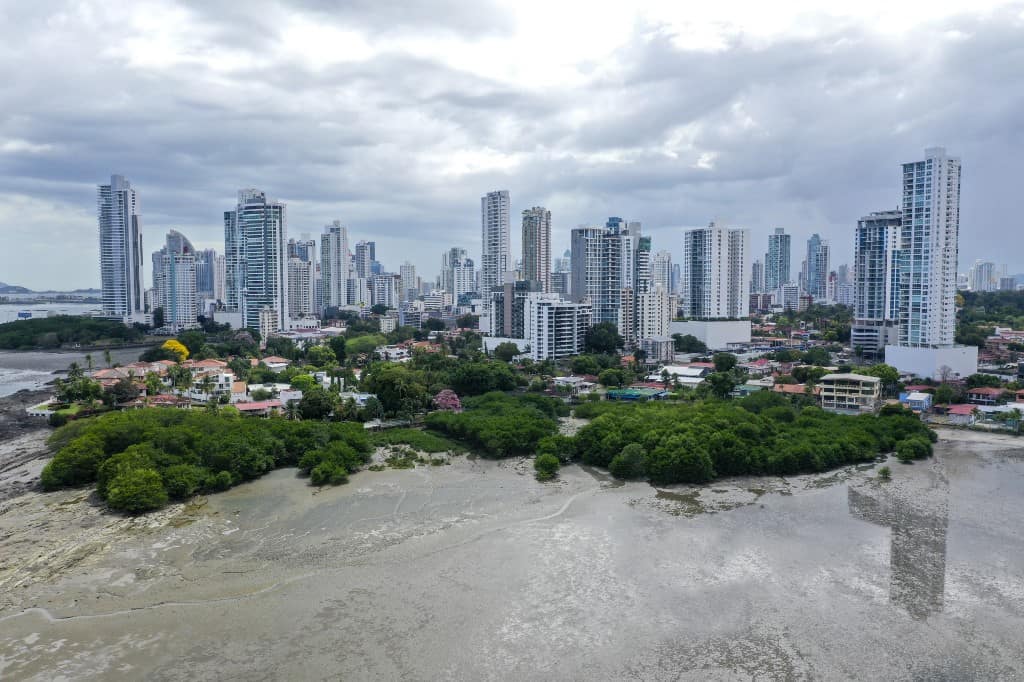
PANAMA – With vegetation almost impenetrable to the sun’s rays and food in abundance, Panama’s mangrove swamps are a vital resting place for thousands of birds on their migratory route. But pollution and urban growth threaten their “resort”. In the Juan Díaz mangrove swamp, a few kilometers from the center of Panama City, on the Pacific coast, the heat and humidity are palpable. The dry leaves, fallen from the trees, paint the ground ocher. Located in the Bay of Panama, which is part of the Ramsar Convention on Wetlands, this habitat is considered one of the most important bird migration sites in the western hemisphere. It is estimated that up to two million shorebirds alone pass through this area every year. In addition, according to Ramsar, the site provides habitat for up to 20% of the world’s population of the Semipalmated Plover and 14% of the Western Sandpiper. There are also parrots, iguanas, crabs, shrimp and shells. READ MORE In Puerto Rico, a marathon effort builds to restore mangroves and dunes

PUERTO RICO – In 2017, Hurricane Maria, a Category 5 storm, struck Puerto Rico. The hurricane dried up four basin mangrove forests in the island’s northeast, leaving behind an urgent need for restoration, according to Robert J. Mayer, a biology professor at the University of Puerto Rico at Aguadilla. “Not having these ecosystems exposes communities and primary infrastructure to the pounding of waves generated by storms, putting the lives of hundreds of people and the integrity of their properties at risk in the face of future extreme climatic events,” said Mayer, who directs the university’s Vida Marina Center for Ecological Restoration and Coastal Conservation. In collaboration with the University of Wisconsin–Madison, Mayer and student volunteers secured $500,000 in financial support from the U.S. Fish and Wildlife Service (USFWS) for the restoration of Puerto Rico’s beleaguered northern mangrove forests, which grow along riverbanks or border salty lagoons. READ MORE ASIA Planting is not (always) necessary to restore healthy mangroves

THAILAND – Having the right mindset on this is crucial to the world’s efforts on mangrove restoration. Writing from a Thai person who experienced planting as the only practice my whole life, I shifted my perspective during my study on Community-Based Ecological Mangrove Restoration (CBEMR) in Thailand. I realize how essential this paradigm shift is for our society to create the transformative change we need. At least in Thailand, we have an image of planting mangroves as a fun activity, doing a good thing as “planting trees” on special days, and restoring mangrove forests. However, the reality hits when the survival rates of those planted mangroves are so low. This is because we barely consider ecological factors behind our efforts. We turn away from understanding the hydrology and suitable soil conditions of the planted areas. READ MORE Aerial survey spots abundant sea life in Trang

THAILAND – About 170 dugongs, 27 Indo-Pacific humpback dolphins and 141 sea turtles have been sighted along islands in Trang during an aerial survey, says the Department of Marine and Coastal Resources (DMCR).The discovery was the result of cooperation between the Marine and Coastal Resources Research Centre, Lower Gulf of Thailand, and another research centre in the Western Upper Gulf. They were searching for rare sea creatures around Koh Libong, Koh Mook and adjacent islands. The search was conducted using an aerial line-transect method and an unmanned aerial vehicle controlled by volunteer pilot Eduado Angelo Loigorri and Pinyada Pithansiri, DMCR director-general Sopon Thongdee said. It showed there are about 170 dugongs living in the area. From their analysis, they found the dugongs would search for food and mate along fields of seagrass. Indo-Pacific humpback dolphins and sea turtles were also spotted. READ MORE OCEANA Key project to restore coastal mangroves

AUSTRALIA – TARWIN Landcare Group (TLG) launched its new coastal restoration project earlier this month. The project was launched during an information session at the Venus Bay Community Centre, followed by a walk at the Doyles Road Beach foreshore. Thirty people registered for the event, which featured speakers from the Westernport Seagrass Partnership (WSP), South Gippsland Conservation Society (SGCS) and the Cape to Cape Resilience Project (CCRP). Satellite monitoring images provided by the CCRP’s Dave Sutton demonstrated the urgent need for the project, which is designed to combat coastal erosion by restoring some of the mangroves that were once prolific in Anderson Inlet. While this area of coastline has always been dynamic, the images revealed that 85ha of beach and 43 per cent of native remnant vegetation has been lost over the past 12 years. Stone walls and other efforts to halt erosion have been unsuccessful and have actually exacerbated the problem, causing scouring and washouts in other areas. Mangroves, in contrast, prevent erosion by reducing and absorbing wave energy before it reaches the shoreline, and trapping sediment with their complex root systems. READ MORE Like this newsletter?
Pease consider donating to MAP to keep it going.
Giving could never be easier  *Articles in this newsletter may mention practices being used and/or show exagerated results being claimed without proof. Stories are presented here in effort to show mangrove related activity around the world and do not necessarily reflect Mangrove Action Project’s views or mangrove restoration best-practices. | ACTION ALERTS
Stop this total madness Stop the biggest heated oil pipeline in the world — right through the heart of Africa!
CLICK HERE Strengthen 60 Women Farmers in El Salvador
DONATE HERE Stop construction work on a private port In Defense of the Quilombo Boca Do Rio TAKE ACTION! Tell Sumitomo to stop building polluting coal power in Bangladesh! TAKE ACTION!
Like this newsletter? Pease consider donating to MAP to keep it going. Giving could never be easier 
MAP Website en Español
haga clic aqui ORDER YOUR 2022 MAP CHILDREN’S ART CALENDER HERE
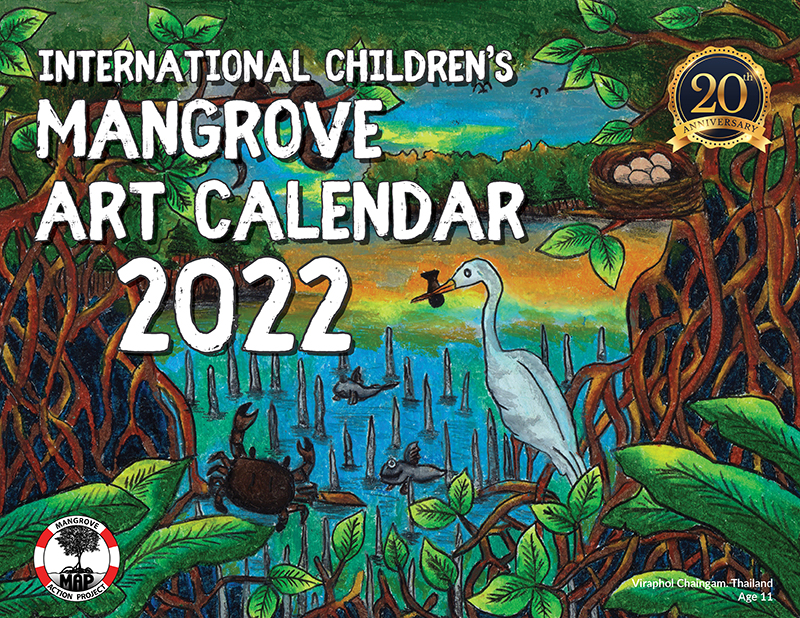 13 Year old Linda Li “Mangrove Adventure” from Kid Dream Art School

WATCH NOW 
Restoring The Natural Mangrove Forest
Watch movie

Community Based Ecological Mangrove Restoration in Rufiji Delta VIEW VIDEO
Video: Mangroves for the Future
View Here WANT TO GET INVOLVED?
Follow and Join MAP!    
Like this newsletter? Pease consider donating to MAP to keep it going. Giving could never be easier 

Interested in connecting or working with MAP? Check out our opportunities here 
MANGROVE ISSUES Want to learn more about mangroves?
Our short presentation will give you a better understanding of the issues we are working to solve. WATCH PRESENTATION What is CBEMR? Download MAP’s 2 page CBEMR Information Sheet containing links to all MAP’s CBEMR resources – CLICK HERE View MAP’s uploaded Videos at
MAP Video Gallery Question Your Shrimp Consumer/Markets Campaign!
WATCH VIDEO Mangroves: Guidebook to Malaysia – Click Here SHARE MAP’S VISION
CLICK HERE to watch short introductory video. Together we can work “at the roots of the sea”. Our short documentary, Reducing the Risk of Disaster through Nature-Based Solutions : Mangroves 
NASA Study Maps the Roots of Global Mangrove Loss

Marvellous Mangroves Curriculum The Marvellous Mangroves Curriculum begins with a simple philosophy – getting future generations to not only learn about, but understand the importance of mangrove forests. VISIT 
The award-winning Marvellous Mangroves (MM) curriculum educates children on the importance of mangroves and their ecological functions, teaching them about modern challenges and mechanisms for sustainability. VIEW VIDEO Marvellous Mangroves Curriculum in Bangladesh – WATCH VIDEO
MARVELLOUS MANGROVES IN BRAZIL
En Portuges 
Marvellous Mangroves – A Curriculum-Based Teachers Guide.
Like this newsletter? Pease consider donating to MAP to keep it going. Giving could never be easier 
“Question Your Shrimp” Campaign Question Your Shrimp – is it really sustainable? Sign the Petition
Note to Our Readers: We strive to keep active links in our newsletter. However, due to circumstances beyond our control, occasionally links to stories may become broken. If you find a link to a story is not functioning, please cut and paste the headline into your browser search bar. In most cases you should be able to locate the original story.
Not yet a MAP News subscriber?
Click here to subscribe.  *Articles in this newsletter may mention practices being used and/or show exagerated results being claimed without proof. Stories are presented here in effort to show mangrove related activity around the world and do not necessarily reflect Mangrove Action Project’s views or mangrove restoration best-practices. *Articles in this newsletter may mention practices being used and/or show exagerated results being claimed without proof. Stories are presented here in effort to show mangrove related activity around the world and do not necessarily reflect Mangrove Action Project’s views or mangrove restoration best-practices.
|


























